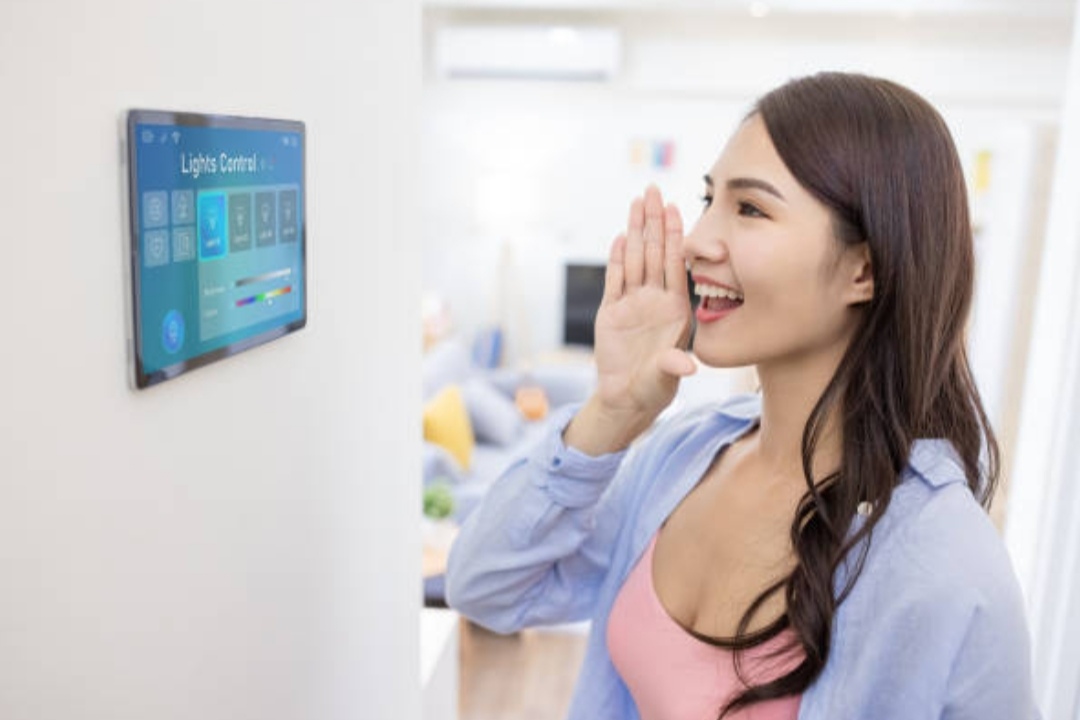🏡 Introduction – Why Smart Home Lighting with Voice Control Is a Must in 2025
In today’s fast-paced world, convenience, efficiency, and automation are more than just buzzwords — they are essentials for modern living.
One of the most transformative upgrades you can make to your home is integrating smart lighting that responds to your voice.
Whether you’re dimming the lights for a cozy movie night, turning on hallway lights without touching a switch, or setting the perfect ambiance for a dinner party, smart home lighting puts total control at your fingertips — or rather, at the tip of your tongue.
If you’ve been wondering how to set up smart home lighting with voice control, you’re in the right place.
This comprehensive guide will walk you through everything from choosing the right bulbs to syncing them seamlessly with your favorite voice assistant — whether it’s Alexa, Google Assistant, or Apple’s Siri.
And yes, we’ll cover all the tools, tips, and must-know tech updates that matter right now, in 2025 — no outdated information here.
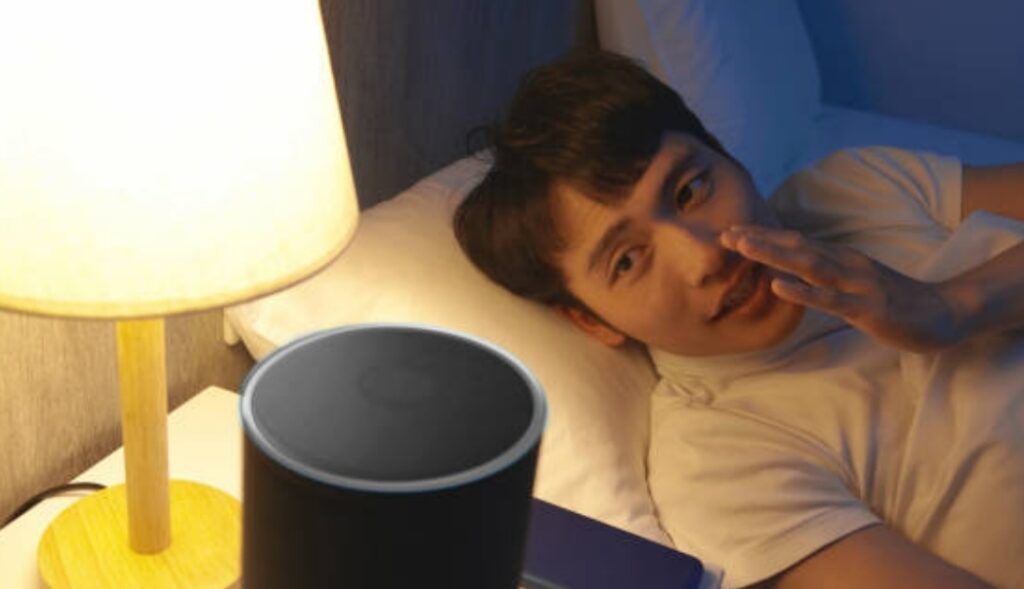
🔎 The Growing Popularity of Smart Home Lighting
The rise of smart homes has led to a surge in smart lighting systems — and for good reason.
These intelligent lighting solutions are energy-efficient, customizable, and incredibly easy to use.
But the real game-changer?
👉 The ability to control lights using just your voice.
With a simple command like “Hey Google, turn off the kitchen lights” or “Alexa, dim the bedroom lights to 30%”, you can manage your entire home’s lighting environment — without lifting a finger.
This hands-free experience is especially helpful for:
- Multitasking parents
- Elderly family members
- People with mobility issues
- Homeowners seeking futuristic upgrades
- Renters looking for easy-to-install smart tech
The great news is — setting it all up is easier than ever, and doesn’t require an electrician or an advanced tech degree.
💡 Why This Guide Matters in 2025
If you’ve searched online, you’ve probably come across dozens of articles about smart lighting.
But here’s the problem — many of them are outdated, vague, or skip the important technical details.
This blog post is designed to:
✅ Show you how to set up smart home lighting with voice control from start to finish
✅ Help you choose the best devices that fit your home and budget
✅ Teach you to connect your lighting system with voice assistants
✅ Optimize your setup for automation, customization, and convenience
✅ Prepare your system for future-proof upgrades and AI integrations
You’ll also discover insider tips, common mistakes to avoid, and recommendations for top-rated smart bulbs, voice-controlled lighting systems, and smart home starter kits that can save you time and money.
💬 A Sneak Peek Into What You’ll Learn
Here’s just a glimpse of what this powerful guide covers:
- ✔️ How to choose smart bulbs that work flawlessly with Alexa, Google, or Siri
- ✔️ The exact steps to sync your lights to your voice assistant in under 10 minutes
- ✔️ How to set up routines like “Good Morning” or “Movie Time”
- ✔️ Common troubleshooting tricks that fix 90% of setup issues
- ✔️ Ways to automate your lights based on time, activity, or location
- ✔️ Security and privacy tips for voice-activated systems
Ready to take control of your home lighting like never before?
Let’s dive in and unlock the full potential of smart home lighting with voice control — one voice command at a time.
✨ Click here to get the top-rated smart lighting kits at a discount before they sell out!
💡 Understanding Smart Home Lighting and Voice Control
To get the most out of your smart home setup, it’s essential to understand the core of how smart lighting works — and how voice control fits into the equation.
This section breaks it down in a simple, non-technical, and super practical way.
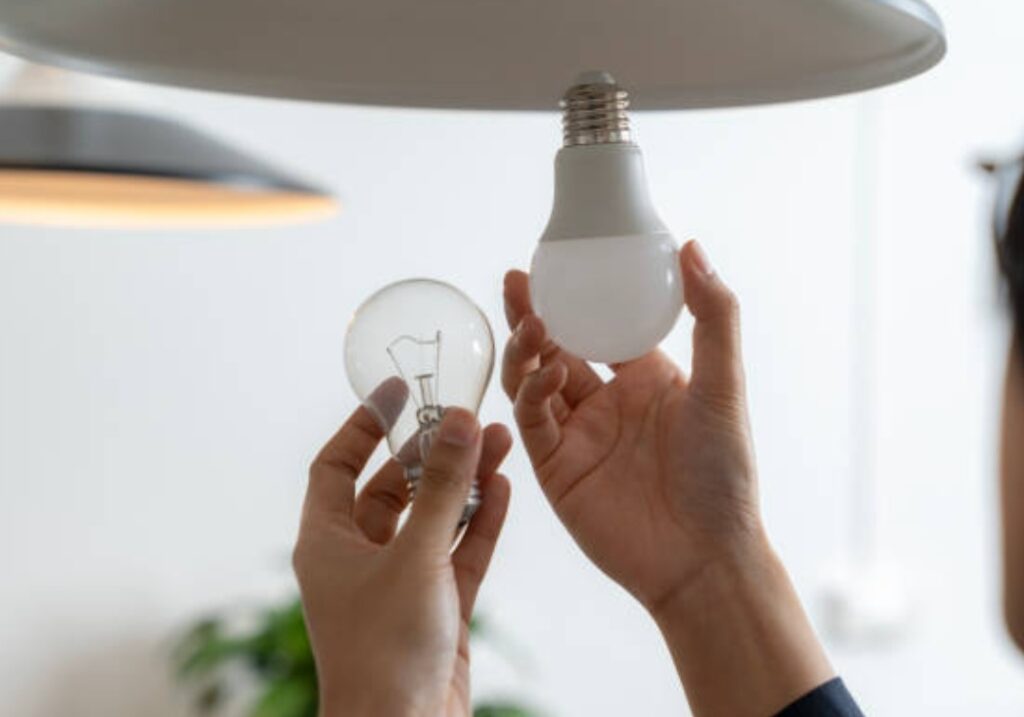
🧠 What is Smart Home Lighting and Why Is It Game-Changing?
Smart home lighting refers to a lighting system that can be controlled remotely or automatically — via smartphone apps, voice assistants, sensors, or schedules.
These lighting systems are typically powered by Wi-Fi, Bluetooth, or Zigbee/Z-Wave protocols, which allow them to communicate with other smart devices in your home.
Here’s what makes them truly “smart”:
- 🔄 Remote Control – Turn your lights on/off from anywhere in the world using your smartphone.
- 🎯 Custom Automation – Set lights to change color, dim, or activate at specific times or based on location.
- 🗣️ Voice Integration – Control everything using voice commands with Alexa, Google Assistant, or Siri.
- 🎨 Ambiance Personalization – Adjust colors and brightness to match your mood, event, or time of day.
- ⚡ Energy Efficiency – Smart bulbs typically use LED technology, reducing electricity usage dramatically.
💥 Fact: According to a 2025 smart home market report, over 72% of homeowners prefer lighting systems that can be voice-controlled — up from 58% in 2022.
This shows just how critical it is to know how to set up smart home lighting with voice control correctly — it’s no longer just a luxury, it’s a standard for modern living.
🧩 How Does Voice Control for Smart Lighting Work?
Voice control uses natural language processing (NLP) and smart home integrations to allow your voice assistant to interpret and execute lighting commands.
Here’s a simple breakdown of the process:
- 🧏♀️ You say a command, like:
“Hey Siri, turn off the living room lights.” - 🧠 The voice assistant interprets the command, identifies the action (turn off), and the target (living room lights).
- 📡 The command is sent to the cloud, processed, and then routed to your smart lighting hub or Wi-Fi-connected bulb.
- 💡 Your lights respond instantly, adjusting to your request within milliseconds.
🤖 Top Voice Assistants You Can Use in 2025
When it comes to setting up smart lighting with voice control, your experience will largely depend on which virtual assistant you’re using.
Let’s break down the Big Three:
🗣️ Amazon Alexa
- Integrates effortlessly with most smart lighting brands.
- Works best with Philips Hue, TP-Link Kasa, Sengled, and GE Cync bulbs.
- Compatible with Alexa Routines, letting you create custom voice commands and multi-action triggers.
Sample commands:
- “Alexa, turn on the hallway light.”
- “Alexa, dim the dining room lights to 30%.”
🔧 Pro Tip: Group your bulbs in the Alexa app by room to simplify voice control.
🌐 Google Assistant
- Natively built into Android phones and Google Nest devices.
- Pairs seamlessly with LIFX, Nanoleaf, Yeelight, and other major brands.
- Allows for custom routines, such as “Good Morning” turning on lights gradually at sunrise.
Sample commands:
- “Hey Google, turn off all bedroom lights.”
- “Hey Google, change the living room lights to warm white.”
🎯 Insider Tip: Use Google’s presence sensing feature to automate lighting based on whether you’re home.
🍎 Apple Siri (via HomeKit)
- Known for strong privacy and encryption protocols.
- Compatible with HomeKit-enabled smart bulbs like Eve, Meross, and Philips Hue.
- Offers “Scenes” and “Automations” via the Apple Home app.
Sample commands:
- “Hey Siri, set ‘Movie Mode’ lighting.”
- “Hey Siri, turn off all the lights.”
📱 Did You Know? With iOS 18, Siri can now handle multi-device automation triggers based on voice and context!

🔍 Which Smart Lights Work with Voice Control?
Most modern smart lights are voice-compatible out of the box, but it’s crucial to pick the right one that integrates with your ecosystem.
Here are a few top-rated smart lighting systems that are built for voice interaction:
- Philips Hue – Ideal for advanced users; works with all voice assistants.
- LIFX – Hub-free and color-rich; works great with Google and Alexa.
- GE Cync – Perfect for beginners; affordable and easy to install.
- Wyze Bulbs – Budget-friendly; Alexa & Google compatible.
- Nanoleaf – Artistic and smart; adds style and scene-based control.
- Sengled Smart LED – Plug-and-play; supports voice and automation.
🧠 Smart Tip: Always check the product label for terms like “Works with Alexa” or “Compatible with Google Assistant” before buying.
✅ What You’ve Learned in This Section:
- ✔️ What smart home lighting really is
- ✔️ How voice assistants like Alexa, Google Assistant, and Siri make control hands-free
- ✔️ Which smart bulbs work best for each assistant
- ✔️ How your voice gets converted into real-time lighting actions
- ✔️ The importance of setting up your system correctly for automation and personalization
💥 Take the Next Step
Now that you understand how smart lighting and voice control work — are you ready to build your dream setup?
🛒 Grab your smart lighting starter kit here and follow along as we break down every step of the installation process next.
🛍️ Choosing the Right Smart Lighting System
Before you jump into setup mode, it’s crucial to choose the right smart lighting system that fits your home, lifestyle, budget — and most importantly — works seamlessly with your preferred voice assistant.
Whether you’re an Alexa devotee, Google Home lover, or Apple user, your smart lights need to play nice with your ecosystem.
This section breaks down everything you need to know to pick the perfect voice-controlled smart lighting solution.
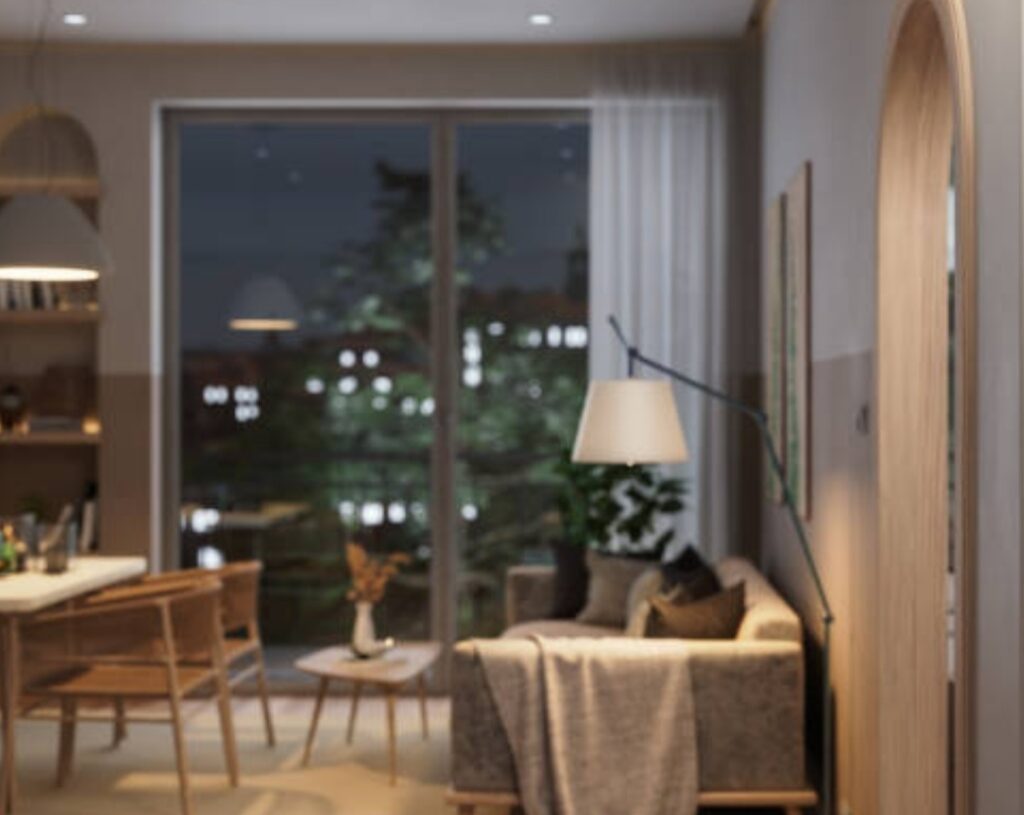
🧪 What to Consider Before Buying a Smart Lighting System
Choosing the best system isn’t just about brand recognition — it’s about compatibility, flexibility, features, and user experience.
Here are key factors to consider before making a decision:
⚙️ 1. Voice Assistant Compatibility
Always make sure your smart lighting system is fully compatible with your voice assistant of choice.
- Alexa Users: Look for bulbs labeled “Works with Amazon Alexa”.
- Google Assistant Users: Confirm “Google Assistant support” is listed on the product.
- Siri/HomeKit Users: Ensure the product is HomeKit-enabled for seamless Apple integration.
🔍 Pro Tip: If you plan to switch assistants in the future, choose bulbs that support multiple platforms.
📶 2. Connectivity Options (Wi-Fi vs Hub)
Not all smart bulbs connect the same way:
- Wi-Fi Bulbs: Connect directly to your router (no hub needed). Great for beginners.
- Zigbee/Z-Wave Bulbs: Require a hub like the Philips Hue Bridge or SmartThings Hub but offer greater range and reliability.
- Bluetooth Bulbs: Useful for local control but limited in range and automation.
📡 For larger homes or advanced automation, hub-based systems are often more stable and scalable.
🌈 3. Features & Customization
Ask yourself:
- Do I want color-changing bulbs for ambiance?
- Is dimming capability important?
- Do I need motion-sensing lights for outdoor or hallway use?
- Will I use schedules, scenes, or routines?
Choose bulbs that support your needs now — and ones you can grow with later.
💰 4. Price vs. Value
While you don’t need to break the bank to get quality smart lighting, don’t always go for the cheapest option.
- Budget brands like Wyze or Sengled are great for renters or first-timers.
- Mid-range options like TP-Link Kasa offer reliable performance with app and voice control.
- Premium systems like Philips Hue deliver top-tier quality, endless features, and advanced automations.
💡 Remember: The most expensive system isn’t always the best — the right system is the one that fits your needs.
🔐 5. Security and Privacy
Smart devices can be entry points for cyber threats.
Choose brands that offer:
- Two-factor authentication (2FA)
- Encrypted data transmission
- Transparent privacy policies
- Regular firmware updates
✅ Brands like Apple, Philips Hue, and Google are known for strong privacy protocols.
🌟 Top 5 Smart Lighting Systems for Voice Control in 2025
Here’s a rundown of the best systems you can buy right now — all tested and compatible with voice assistants.
💡 1. Philips Hue (💎 Premium Choice)
- Works with Alexa, Google, Siri/HomeKit
- Requires Hue Bridge (Zigbee-based)
- Offers 16 million colors, automation, motion sensors
- Best-in-class for smart home integration
📦 Ideal for whole-home setups and advanced automation fans
👉 Check Philips Hue starter kit here
🔌 2. LIFX (⚡ No-Hub Champion)
- Works with Alexa, Google Assistant, and Siri
- Connects via Wi-Fi — no hub required
- Extremely bright and vibrant colors
- Perfect for renters or small apartments
📦 Great for plug-and-play convenience
👉 See LIFX voice-compatible bulbs here
💸 3. TP-Link Kasa Smart Bulbs
- Alexa & Google Assistant support
- Affordable and easy to set up
- Offers dimming, scheduling, and color control
- Solid app with simple voice syncing
📦 Best value for money
👉 Buy Kasa smart bulbs at a discount
🧩 4. GE Cync (Beginner-Friendly)
- No hub required
- Works with Alexa and Google
- Simple setup with Cync app
- Optional Cync Smart Plug adds extra voice control to non-smart lamps
📦 Perfect for tech newbies
👉 Shop GE Cync smart lighting here
🎨 5. Nanoleaf (For Creative Setups)
- Works with all major voice assistants
- Fun, customizable LED wall panels and bulbs
- Advanced automation and “Scene” syncing
- Great for gaming rooms or smart art displays
📦 Best for personalized decor + smart control
👉 Explore Nanoleaf panels and lights
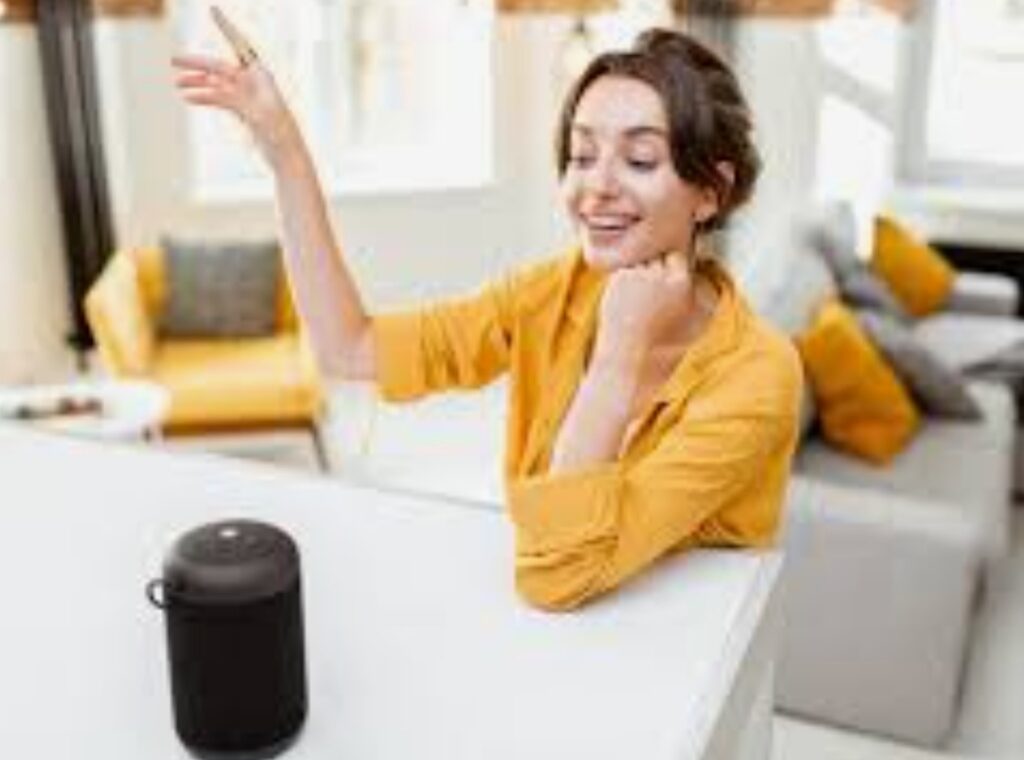
🔍 Bonus Tip – Don’t Mix Ecosystems (Unless You Know What You’re Doing)
While mixing brands is possible using platforms like Amazon Alexa or Google Home, it can sometimes create connectivity issues or inconsistent automation.
If you’re just getting started with how to set up smart home lighting with voice control, stick to one ecosystem for your lighting setup — at least until you’re more comfortable troubleshooting cross-platform issues.
📈 What’s the Best Smart Lighting Setup for Beginners?
If you’re looking for a beginner-friendly, affordable, and voice-ready system in 2025, here’s our recommendation:
✔️ TP-Link Kasa Smart Bulbs + Alexa or Google Assistant
✔️ GE Cync Bulbs + Smart Plug + Google Home Mini
✔️ LIFX Color Bulbs + Smartphone App (no hub needed)
These combos are easy to set up, voice-compatible out of the box, and deliver excellent performance without complexity.
💥 Start Smart, Start Bright
Choosing the right smart lighting system is the foundation of your voice-controlled home.
Make the wrong choice, and you’ll end up frustrated.
Make the right one — and you’ll experience pure lighting magic every time you say a command.
🛒 Click here to grab the perfect smart lighting bundle and follow our next section where we show you how to install and set everything up — step by step!
🧰 Step-by-Step Guide to Setting Up Smart Lighting with Voice Control
Setting up your smart lighting system doesn’t have to be complicated — even if it sounds like it is.
With the right tools, a clear plan, and our expert guidance, you can transform any room into a voice-activated smart zone in under 30 minutes.
This step-by-step guide will walk you through everything from unboxing to speaking your first lighting command.
Whether you’re using Alexa, Google Assistant, or Apple’s Siri, this guide is built to help you master how to set up smart home lighting with voice control — easily, efficiently, and without the tech headaches.

🔧 What You’ll Need Before You Start
Make sure you’ve got these essentials ready:
- 📦 Your chosen smart bulbs or smart plugs
- 📶 A stable 2.4GHz Wi-Fi connection (most bulbs don’t work with 5GHz)
- 📱 Smartphone or tablet
- 🔊 Compatible voice assistant device (e.g., Echo Dot, Google Nest Mini, or iPhone)
- 🛠️ Relevant apps installed (Alexa app, Google Home app, Apple Home app, or product-specific apps like Hue, Kasa, or LIFX)
✨ Optional but helpful: A smart hub if you’re using Zigbee/Z-Wave-based systems like Philips Hue
🏗️ Step 1 – Install and Power Your Smart Bulbs
This is your first hands-on step!
💡 Screw It In (Literally)
- Turn off the light switch.
- Remove your existing bulb.
- Install the new smart bulb.
- Turn the switch back on — the bulb should light up, flash, or pulse (depending on brand).
🔌 For Smart Plugs or Lamps
If you’re using a smart plug, just plug it into the wall and connect your non-smart lamp to it.
✅ Smart plugs are a great hack to make any lamp voice-controlled instantly.
📲 Step 2 – Download the Right App
Each brand of smart bulb or plug typically requires its own companion app.
Here’s what to do:
- Go to the App Store (iOS) or Google Play Store (Android)
- Download the app that matches your product:
- Philips Hue → Hue app
- TP-Link → Kasa Smart app
- LIFX → LIFX app
- GE Cync → Cync app
- Philips Hue → Hue app
- Open the app and create an account (if needed).
👣 Follow the on-screen steps to add your bulb to the app and connect it to Wi-Fi.
🌐 Step 3 – Connect to Wi-Fi (2.4GHz Required!)
Almost all smart lights use the 2.4GHz frequency of your Wi-Fi network — not the 5GHz one.
Make sure:
- Your phone is connected to 2.4GHz Wi-Fi
- The bulb is in range of your router
- Bluetooth is enabled (some bulbs use Bluetooth for pairing)
⚠️ If your router combines 2.4GHz and 5GHz, temporarily disable 5GHz or set up a guest 2.4GHz network to ensure smooth pairing.
🧠 Step 4 – Set Up Voice Assistant Integration
Now comes the exciting part — adding voice control!
🔊 For Amazon Alexa
- Open the Alexa app
- Tap Devices → “+” → Add Device
- Select Light or the brand name directly
- Follow the prompts to link the app or enable the skill
- Discover devices (Alexa will auto-detect it if it’s paired correctly)
💬 Say:
“Alexa, turn on the bedroom lights.”
“Alexa, dim the living room to 30%.”
🟢 For Google Assistant
- Open the Google Home app
- Tap + → Set up device → Works with Google
- Search for your brand (e.g., LIFX, Philips Hue)
- Sign in and link your account
- Assign your light to a room for better voice control
💬 Say:
“Hey Google, set the kitchen lights to warm white.”
🍏 For Apple HomeKit / Siri
- Open the Home app on your iPhone or iPad
- Tap + → Add Accessory
- Scan the HomeKit code on your bulb or packaging
- Assign it to a room
- Customize name and scene (optional)
💬 Say:
“Hey Siri, turn off all lights.”
“Hey Siri, set movie scene.”
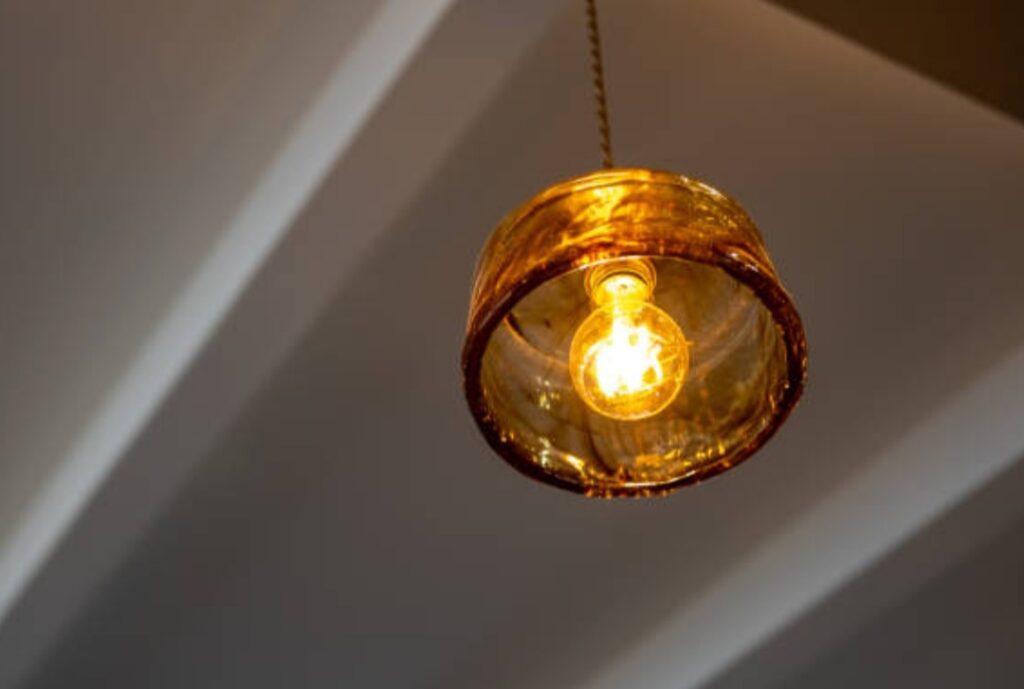
🌈 Step 5 – Name Your Bulbs for Natural Voice Commands
Naming your bulbs helps your assistant understand you clearly.
For example:
- “Bedroom Lamp”
- “Hallway Light”
- “Reading Corner”
- “Desk Lamp”
💡 Avoid generic names like “Light 1” — these will confuse your voice assistant.
You can even create Groups or Rooms like “Downstairs Lights” or “Movie Time Scene” for more advanced control.
🕹️ Step 6 – Create Routines, Schedules & Automations
This is where your home gets smarter — and cooler.
⏰ Examples of Automations:
- Wake-Up Light: Slowly brighten your lights every morning at 7AM
- Night Mode: Dim all lights to 10% at 10PM
- Away Mode: Randomly turn lights on/off to deter burglars
Use your app or voice assistant to set these up based on:
- Time
- Voice command
- Device actions (like motion sensors or door sensors)
🛡️ Step 7 – Test and Troubleshoot Your Setup
Now that everything is paired and voice-enabled:
✅ Test your lights using voice commands
✅ Try different scenes, colors, or schedules
✅ Check for any connectivity delays or errors
✅ Reboot your router or app if needed
💡 If your light isn’t responding, try resetting it via the bulb’s on/off toggle method (usually 3-5 times quickly).
🔥 You’ve Got the Power of Voice in Your Hands!
Congratulations — your home is now equipped with voice-activated lighting magic ✨
Now, you can:
- Set the mood without lifting a finger
- Control your lights from anywhere
- Impress guests with your futuristic setup
- Automate your routines like a smart home pro
🎯 Ready to take it further? Check out advanced automation kits here to supercharge your smart home experience.
🧠 Advanced Voice Commands and Automation Ideas
So, you’ve set up your lights and can turn them on or off with a simple voice command.
But that’s just scratching the surface of what’s possible.
Now it’s time to unlock the real magic of voice-controlled smart lighting — from custom automations to mood lighting, and even hands-free routines that make your home feel like it’s straight out of a sci-fi movie.
Whether you’re a beginner or a seasoned smart home user, these advanced voice commands and automation ideas will take your setup from good to mind-blowingly great.
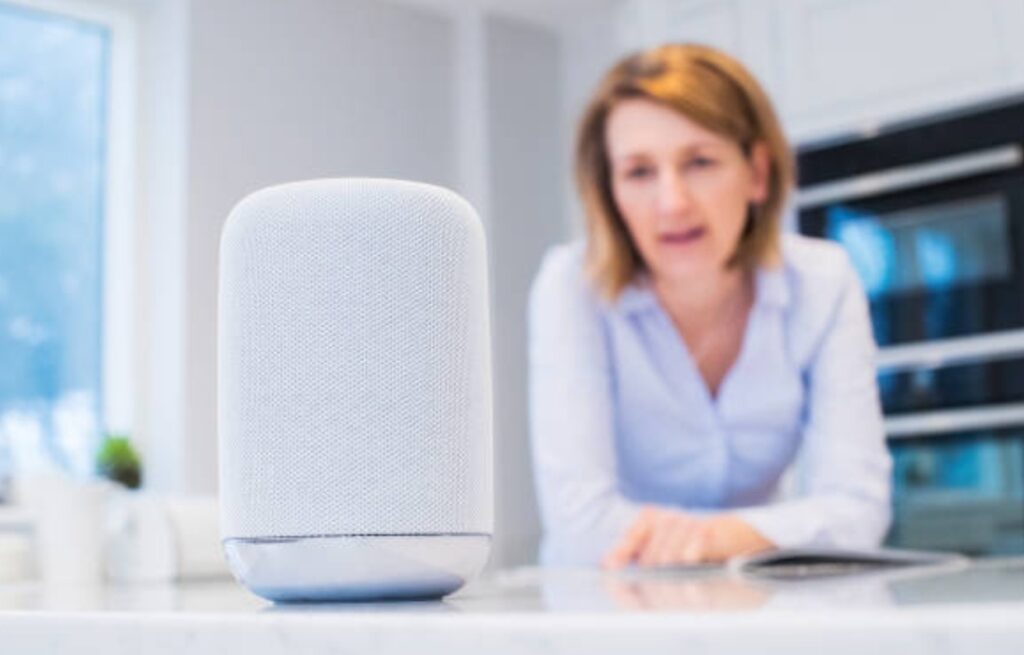
🎙️ Voice Commands Beyond “Turn On the Light”
Most people stop at simple commands like “Turn on the living room light.” But your assistant can do so much more.
Here are some powerful, creative voice prompts you can try:
🌅 Mood & Ambiance
- “Alexa, set the living room lights to 25%.”
- “Hey Google, make the bedroom lights warm white.”
- “Siri, change the kitchen light to cool blue.”
💡 Use lighting to reflect your mood, time of day, or activity — from cozy evenings to vibrant parties.
🎬 Scenes & Multi-Device Routines
You can create and activate “Scenes” that control multiple lights or devices at once.
Try:
- “Alexa, activate Movie Night.” 🎥
- “Hey Google, start Dinner Scene.” 🍽️
- “Siri, set Relax Mode.” 🧘
These can dim the lights, change colors, and even control devices like TVs, fans, or smart speakers — all with one command.
🛠 Pro tip: Use the companion app (like Alexa or Google Home) to name and build custom scenes based on your routine.
⏰ Automation That Works While You Relax
Set your lights to work automatically — no voice required.
Here’s how to level up your automation game:
🌄 Time-Based Routines
- Wake-up lights that gradually brighten at 6:30 AM
- Night mode that dims all lights to 10% at 10 PM
- Sunset sync that activates outdoor lights when the sun sets
These can be configured easily in the Alexa, Google Home, or HomeKit apps.
🚪 Sensor-Based Triggers
Pair your lighting with motion sensors or door/window sensors to do things like:
- Lights turn on when you walk into a room
- Porch lights turn on when your door opens
- Hallway lights light up when motion is detected at night
🎯 These are excellent for hands-free automation, especially for late-night trips to the bathroom or kitchen.
📍 Location-Based Automation (Geofencing)
Yes, your lights can track where you are.
Set automations based on your smartphone’s location:
- Lights turn off when you leave home
- Lights turn on when you’re within 1 mile of home
- Trigger “Welcome Home” scene as you arrive
This is possible using apps like Alexa Routines, Google Home Routines, or Apple’s Shortcuts + HomeKit.
🌦️ Weather-Based Lighting Routines
Feeling extra smart? Set up routines that respond to local weather!
Try:
- “If it’s raining, turn lights blue.”
- “If it’s cloudy, increase brightness.”
- “When it’s sunny, set a warm white tone.”
☁️ This not only keeps your lighting intuitive but also adapts it to your daily environment — giving your home that smart edge.

🗣️ Natural Language Voice Tricks
Most assistants now support natural speech patterns, so you don’t have to memorize stiff commands.
Here’s how to sound more human and still get things done:
Instead of:
“Turn on hallway light to 50%.”
Say:
“Could you dim the hallway lights just a bit?”
“Make the lights cozy in the living room.”
“Set the vibe to movie mode.”
⚡ These smart assistants are becoming context-aware, which means they understand more casual speech.
🔄 Sync with Music, TV & More
Yes, your lights can party with you.
Try syncing your smart lighting with:
- Your TV: Dim the lights when your show starts
- Your music: Use apps like Hue Sync or LIFX Effects to have the lights pulse with the beat
- Gaming: Create gaming scenes that match the color of the screen (perfect for RGB setups)
🎮 Gamers and streamers — this is your chance to create dynamic, immersive lighting effects.
🚀 Ready to Supercharge Your Smart Home Experience?
You now have the power to master lighting control like a pro — no more flipping switches, no more clunky remotes.
With these advanced automations and voice tricks, your home can:
✅ Adapt to your routines
✅ React to your mood
✅ Save energy
✅ Make life ridiculously convenient
👉 Explore more advanced smart lighting gear here and take your setup from smart to genius-level.
🛠️ Troubleshooting Common Issues with Smart Home Lighting and Voice Control
Even the smartest homes hit a few snags.
Whether it’s a light that won’t connect, a command that’s ignored, or an app that just won’t cooperate, smart lighting setups can occasionally be tricky.
But don’t worry — we’ve got your back.
Here’s how to fix the most common smart lighting problems and keep your voice-controlled setup running smoothly. 💡
These solutions cover devices like Philips Hue, TP-Link Kasa, LIFX, Google Home, Amazon Alexa, Apple HomeKit, and more.
This section is designed to help anyone struggling with how to set up smart home lighting with voice control avoid the frustration and enjoy their setup to the fullest.
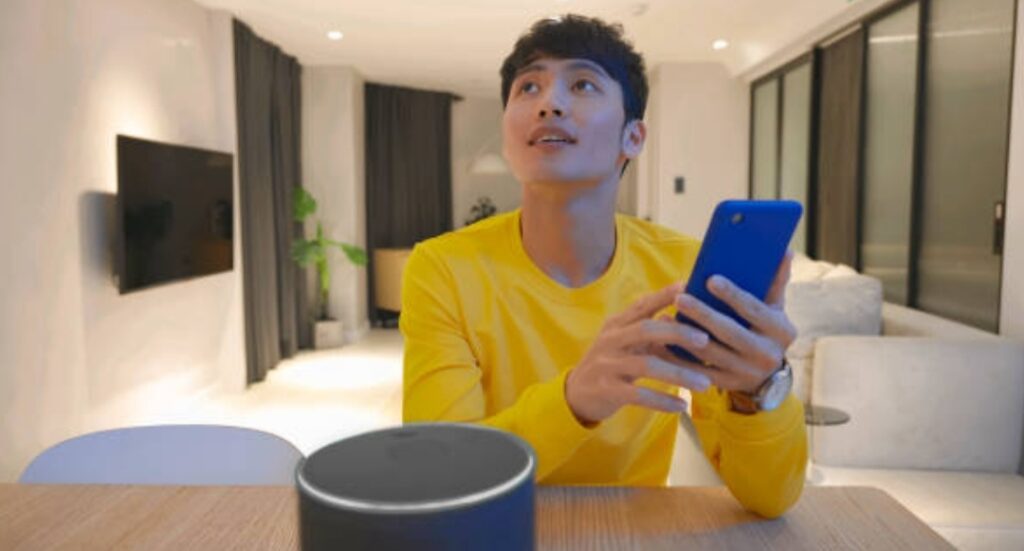
🚫 Smart Bulb Not Connecting to Wi-Fi
This is one of the most common setup issues.
🔍 Why It Happens:
- Your bulb only supports 2.4GHz Wi-Fi, but your phone is on 5GHz
- You’re too far from the router
- The bulb wasn’t put into pairing mode correctly
- Weak or unstable Wi-Fi signal
✅ How to Fix It:
- Make sure your phone is on the 2.4GHz network
- Move closer to your router during setup
- Power cycle the bulb (turn it on and off 3-5 times quickly to reset it)
- Restart your router
- Disable your phone’s mobile data during pairing
💡 Still stuck? Try using a guest network with only 2.4GHz enabled temporarily.
🗣️ Voice Assistant Doesn’t Recognize Commands
If Alexa, Google Assistant, or Siri isn’t responding to your commands, try these quick fixes.
🚨 Why It Happens:
- The smart device isn’t linked properly
- Your device name is confusing or generic
- The assistant misunderstood your command
🧰 How to Fix It:
- Double-check that your bulb is listed in the app (Alexa/Google Home/Home app)
- Rename the light to something unique like “Desk Lamp” or “Cozy Corner”
- Use clear, natural commands, e.g., “Turn on the living room light”
- Unlink and relink the smart bulb’s skill/integration in your voice assistant app
👂 If your assistant says “Sorry, I didn’t catch that,” try rephrasing with a simpler sentence.
📵 Lights Are Unresponsive or Laggy
Your smart bulb is connected — but there’s a noticeable delay or no reaction at all.
🔍 Possible Causes:
- Low Wi-Fi signal strength
- Bulb is too far from router or hub
- App-server issue or cloud delay
- Network congestion from too many devices
⚙️ Solutions:
- Reboot your router
- Use a Wi-Fi extender to boost signal strength
- Group fewer devices on the same Wi-Fi band
- Schedule reboots of your router for better performance
📶 Pro Tip: Use mesh Wi-Fi systems like TP-Link Deco or Google Nest WiFi for strong coverage in every room.
🔁 Smart Bulb Keeps Disconnecting
Intermittent disconnections are annoying — here’s how to stabilize things.
🧠 Potential Issues:
- IP conflicts or DHCP issues on your router
- Router settings interfering with IoT devices
- Firmware is outdated (either bulb or router)
🛠 How to Fix:
- Reserve a static IP for your bulb from your router settings
- Update both the bulb firmware and router firmware
- Avoid too many simultaneous device connections on one router
- Disable features like “AP Isolation” or “QoS” (in some cases)
🔄 Some brands let you schedule auto-reconnects or auto-resets — enable these in the companion app if available.
🧩 Scenes or Automations Not Working
If your smart scenes or routines aren’t activating as expected, it could be a configuration hiccup.
🧪 What Could Be Wrong:
- Conflicting or duplicate automation rules
- Missing device in the scene
- Voice assistant failed to sync latest changes
🧰 How to Resolve:
- Re-check your routine or automation in the app
- Make sure each bulb/device is assigned to the correct room
- Delete and re-create the automation
- Ask your assistant to “Sync devices” or “Discover devices” again
🔁 Always test your routines manually before relying on automation triggers.
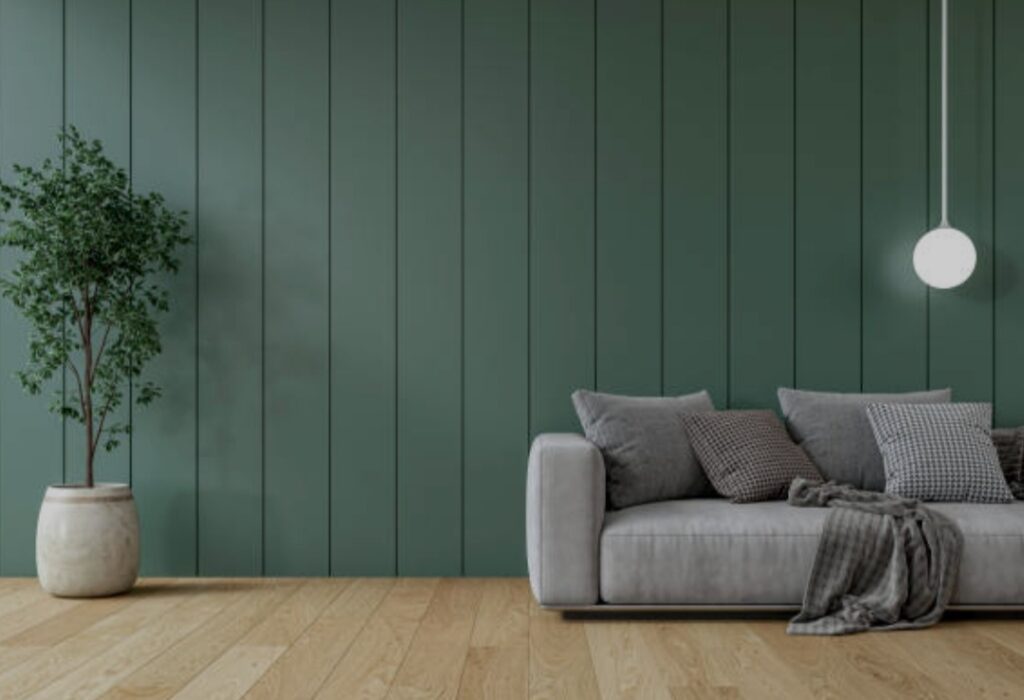
📱 App Is Crashing or Freezing
Sometimes the smart home companion app itself causes the headache.
⚠️ Fix App Issues Fast:
- Update the app from App Store / Play Store
- Force close and reopen the app
- Clear app cache in your phone’s settings
- Uninstall and reinstall the app
🔧 Still crashing? Check online forums or Reddit — others might be experiencing the same issue with a temporary fix.
🔒 Voice Commands Not Working After Update
Software updates can sometimes reset or break integrations.
🧪 What To Do:
- Re-link your smart light account in Alexa/Google/Siri
- Reboot your voice assistant device (smart speaker/display)
- Check for skill/integration updates inside the voice assistant app
- Test voice control directly from your phone (using the assistant app)
🧩 New updates often require a refresh of your voice setup — think of it as spring cleaning for your smart home.
🚀 Don’t Let Glitches Dim Your Smart Home Experience!
Smart lighting problems happen — but now you’re ready to squash them like a pro. 💪
From Wi-Fi weirdness to uncooperative assistants, you’ve got the know-how to fix it fast and get back to enjoying your futuristic, voice-controlled lighting.
👉 Need help choosing a more stable smart lighting system? Check out our top expert recommendations here!
❓ Frequently Asked Questions (FAQs) About Smart Home Lighting with Voice Control

🔊 Can I control smart lights with my voice without a smart speaker?
Yes, you can!
While devices like Amazon Echo, Google Nest, or Apple HomePod are popular for voice control, you don’t necessarily need a speaker.
✅ You can control most smart lights via:
- Your smartphone’s built-in assistant (Siri, Google Assistant, or Alexa app)
- Smartwatch voice assistants
- Laptop-based voice control tools like Cortana (Windows) or Siri (Mac)
💡 Tip: If you’re using your phone, just open the assistant and say “Turn on bedroom light.”
🌐 Do smart bulbs need Wi-Fi to work with voice control?
Most smart bulbs do need Wi-Fi to respond to voice commands — especially cloud-based systems like TP-Link Kasa, LIFX, or Yeelight.
However, some brands (like Philips Hue or IKEA TRÅDFRI) can work locally using a bridge or hub via Zigbee or Thread protocols.
🧠 If you’re concerned about internet outages, look for bulbs with local control features.
🧠 What is the easiest way to set up smart home lighting with voice control?
The easiest way to set up voice-controlled smart lighting is:
- Plug in your smart bulb or switch
- Download the companion app (Kasa, Hue, LIFX, etc.)
- Connect the device to your 2.4GHz Wi-Fi network
- Link the app to your voice assistant (Alexa, Google Home, or Siri)
- Assign a room and name the light for easy voice control
- Say: “Hey Google, turn on the living room light.”
⚡ Simple as that! Many smart bulbs even offer auto-discovery and QR code setup to make it easier.
💬 What voice assistants are compatible with smart lighting?
Most major smart lighting brands are compatible with the following voice assistants:
- 🟦 Amazon Alexa
- 🟥 Google Assistant
- 🟪 Apple Siri / HomeKit
- 🟨 Samsung Bixby (limited compatibility)
Some systems also integrate with IFTTT, SmartThings, and Home Assistant for advanced automation.
🔐 Are smart lights safe to use with voice control?
Yes, smart lighting is generally safe — but there are a few precautions you can take to enhance security:
✅ Tips for smart light safety:
- Use strong, unique passwords for your accounts
- Keep your smart light apps and devices updated
- Avoid using public Wi-Fi for device setup
- Disable voice purchasing if you’re using Alexa
🔒 Bonus Tip: Consider using a separate “IoT” Wi-Fi network for smart devices.
💡 Can I set different lighting moods using voice commands?
Absolutely!
Voice assistants like Alexa and Google Assistant allow you to create custom scenes or moods using natural commands.
Examples:
- “Alexa, set romantic mode.”
- “Hey Google, activate party lights.”
- “Siri, set the dining lights to 30% warm white.”
🎨 You can adjust brightness, color temperature, and even light color — all hands-free!
📱 Can I control smart lights when I’m not at home?
Yes!
As long as your smart lights are connected to the internet, you can control them remotely via:
- The light’s companion mobile app (e.g., Hue, Kasa, LIFX)
- Your smart assistant’s app (e.g., Alexa or Google Home)
- Automations triggered by location (geofencing)
🌍 Perfect for making your home look occupied when you’re away.
🔄 Can I schedule smart lights to turn on and off automatically?
Yes, most smart light systems include built-in scheduling features.
You can:
- Set specific on/off times
- Use sunset/sunrise triggers
- Enable vacation mode for random lighting
- Combine schedules with voice-controlled routines
⏰ Example: “Alexa, turn on porch lights every day at 6:30 PM.”
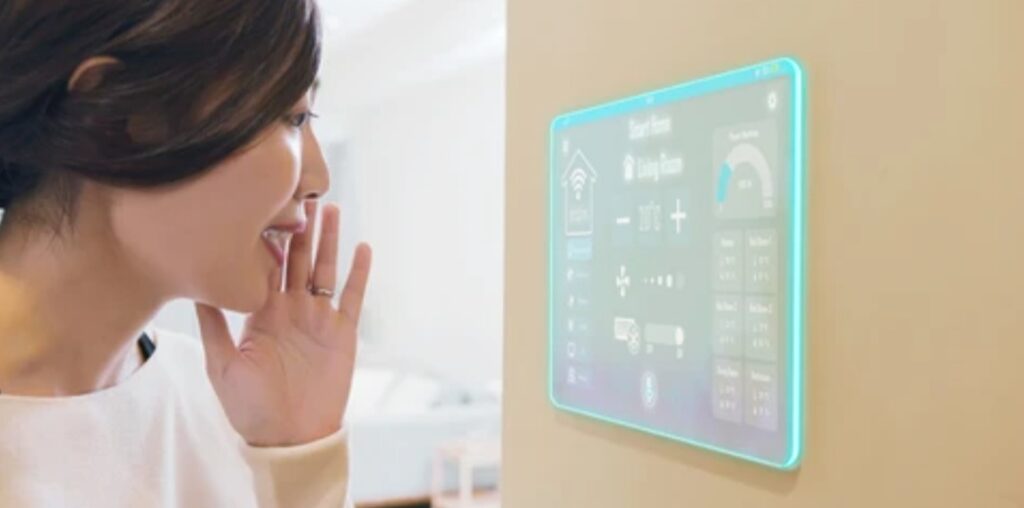
🧩 Can I mix different smart bulb brands in one home?
Yes, but it depends on your platform.
If you use:
- Amazon Alexa or Google Home → You can mix any compatible brands
- Apple HomeKit → Stick to devices that are officially certified
- SmartThings or Home Assistant → Great for advanced mixed-brand setups
🎯 Name and group your bulbs properly in the app to avoid confusion when using voice commands.
📦 What do I need to get started with smart lighting and voice control?
Here’s a quick checklist:
✅ Essentials:
- A smart bulb or smart light switch
- A stable 2.4GHz Wi-Fi network
- A smartphone with Alexa, Google Home, or Apple Home
- Optional: Smart speaker/display for hands-free control
🛒 Want to start smart? Check out our beginner-friendly starter kits designed for voice control.
💬 Can I use smart lighting with Amazon Alexa and Google Home at the same time?
Technically yes, but it’s not ideal.
Most bulbs can only be linked to one voice platform at a time.
However, you can:
- Use different bulbs with different assistants
- Control all devices via their native apps
- Use third-party tools like IFTTT or Home Assistant to unify control
🧠 For simplicity, it’s best to stick with one voice assistant per home setup.
🔥 Still Have Questions? Let’s Light Up the Answers!
Smart lighting can transform your space — and now you’ve got all the answers to make setup, control, and troubleshooting a breeze.
👉 Ready to build your own voice-controlled smart lighting system? Explore our top picks for smart bulbs and devices now!
✅ Conclusion — Illuminate Your Life the Smart Way
In today’s fast-paced world, the ability to control your home lighting with just your voice isn’t just convenient — it’s transformative.
Whether you’re relaxing after a long day, setting the mood for a cozy dinner, or adding an extra layer of security while you’re away, smart home lighting with voice control makes your home smarter, safer, and more energy-efficient.

Throughout this comprehensive guide, we’ve walked you step-by-step through how to set up smart home lighting with voice control — from choosing the right smart bulbs to integrating your favorite voice assistant like Alexa, Google Assistant, or Siri.
We’ve also covered:
- How to choose between smart bulbs and smart switches
- How to connect devices to Wi-Fi and voice platforms
- Troubleshooting common issues
- Advanced automations and routines
- Real-world FAQs based on what users are asking right now
⚡ The future of home lighting is hands-free. And now, you’re ready to embrace it.
No more fumbling for switches or pulling out your phone — just say the word, and your home responds.
🔥 Ready to Get Started? Don’t Wait!
👉 Check out the best smart lighting starter kits and bring your voice-controlled lighting dreams to life today.
💡 Still have questions? Explore our smart lighting hub for product comparisons, setup guides, and exclusive deals.
You might also like :

